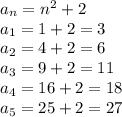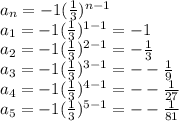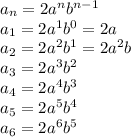 1
1  1
1  43
43 



 43
43 



 1
1  1
1  term of the sequence be
term of the sequence be 
 =1/27, second term
=1/27, second term  =1/9 and so on
=1/9 and so on




 is
is 
 term of the sequence be
term of the sequence be 
 =1/27, second term
=1/27, second term  =1/9 and so on
=1/9 and so on




 is
is 
 1
1 a) add n+1 to the previous term
b) add the previous two terms
d) subtract n+1 from the previous term
e) multiply the previous term by 3
f) subtract 2 from previous term then add 5 to the next term
Step-by-step explanation:
a) 1, 3, 6, 10
∨ ∨ ∨
+2 +3 +4 The next term is 10 +5 = 15
b) 1, 2, 3, 5
∨ ∨ ∨
=3 =5 =8 The next term is 5 + 8 = 13
d) 8, 7, 5, 2
∨ ∨ ∨
-1 -2 -3 zThe next term is 2 - 4 = -2
e) 1, 3, 9, 27
∨ ∨ ∨
×3 ×3 ×3 The next term is 27 × 3 = 81
f) 49, 47, 52, 50, 55
∨ ∨ ∨ ∨
-2 +5 -2 +5 The next term is 55 - 2 = 53
The following term is 53 + 5 = 58

It will provide an instant answer!
